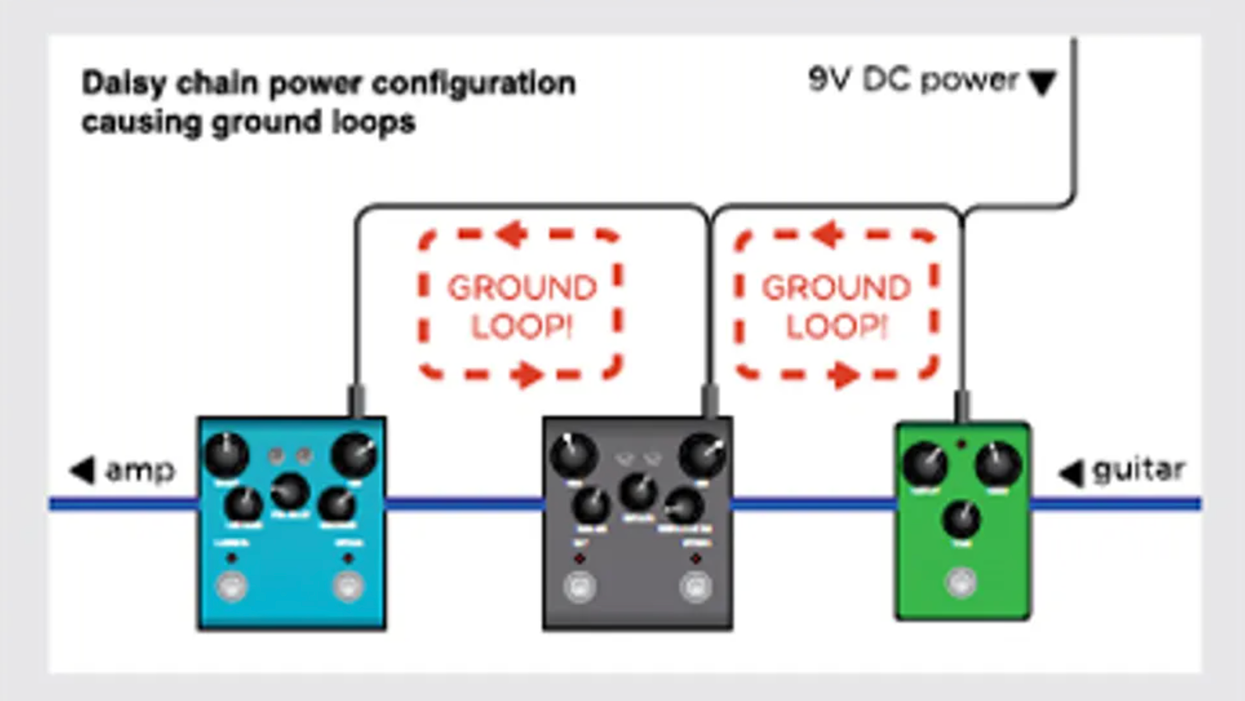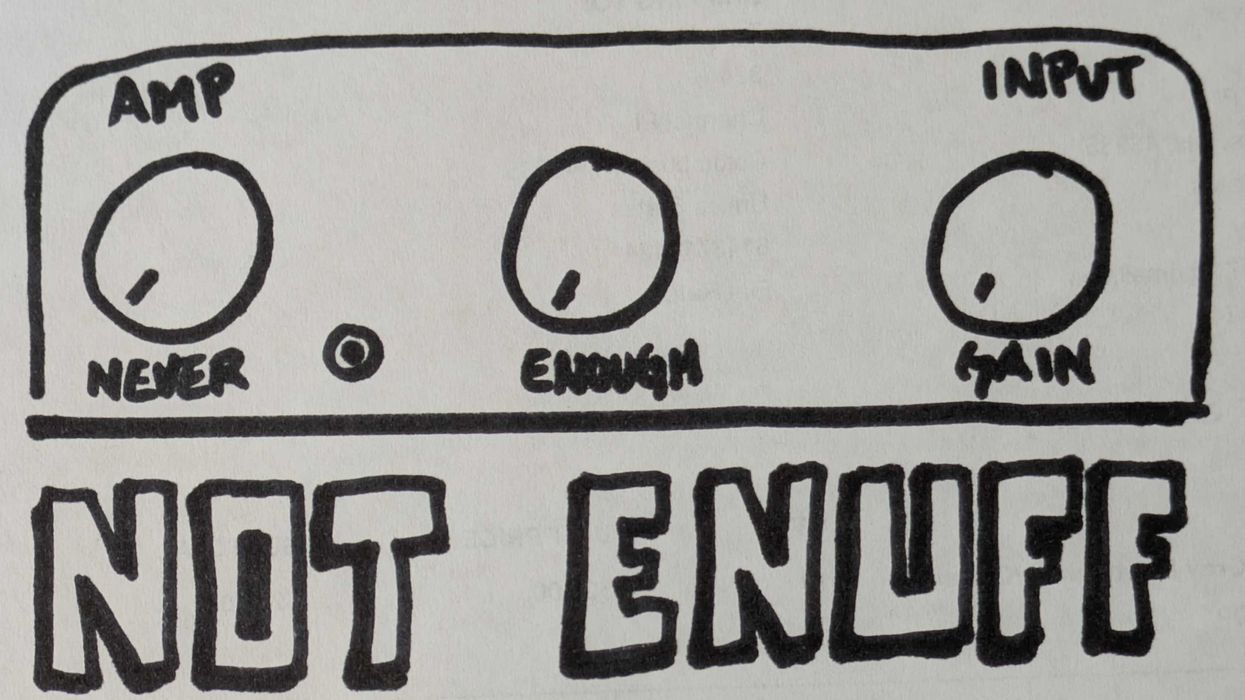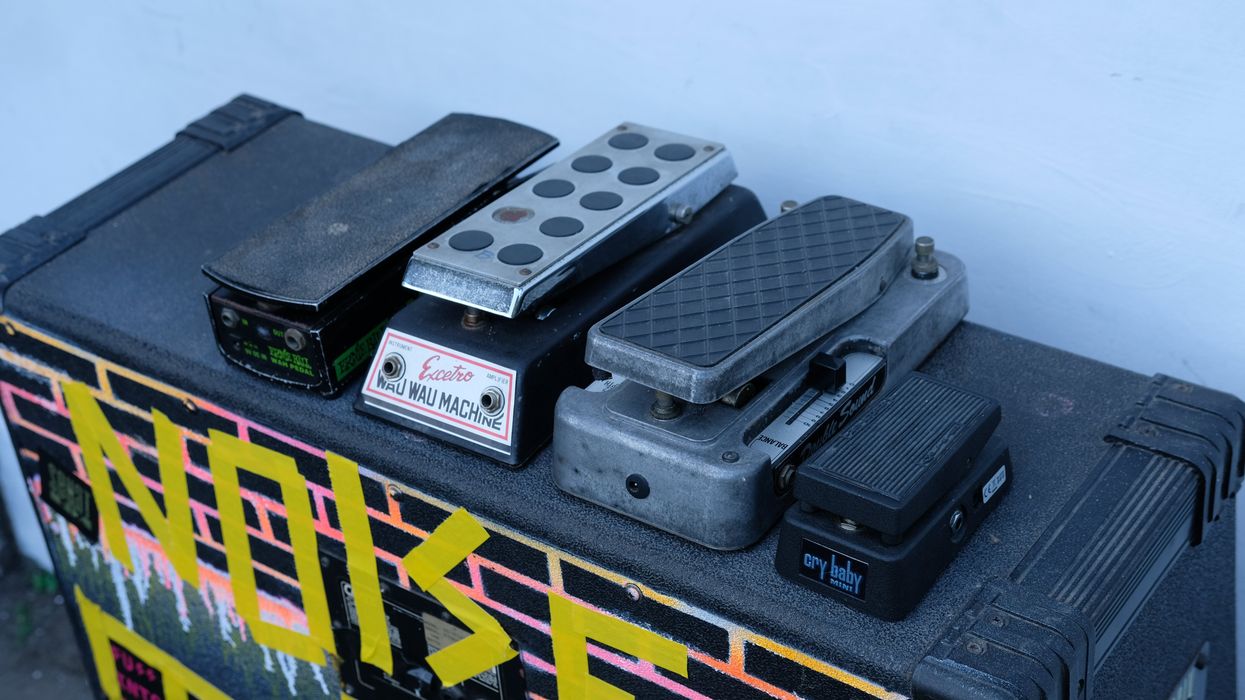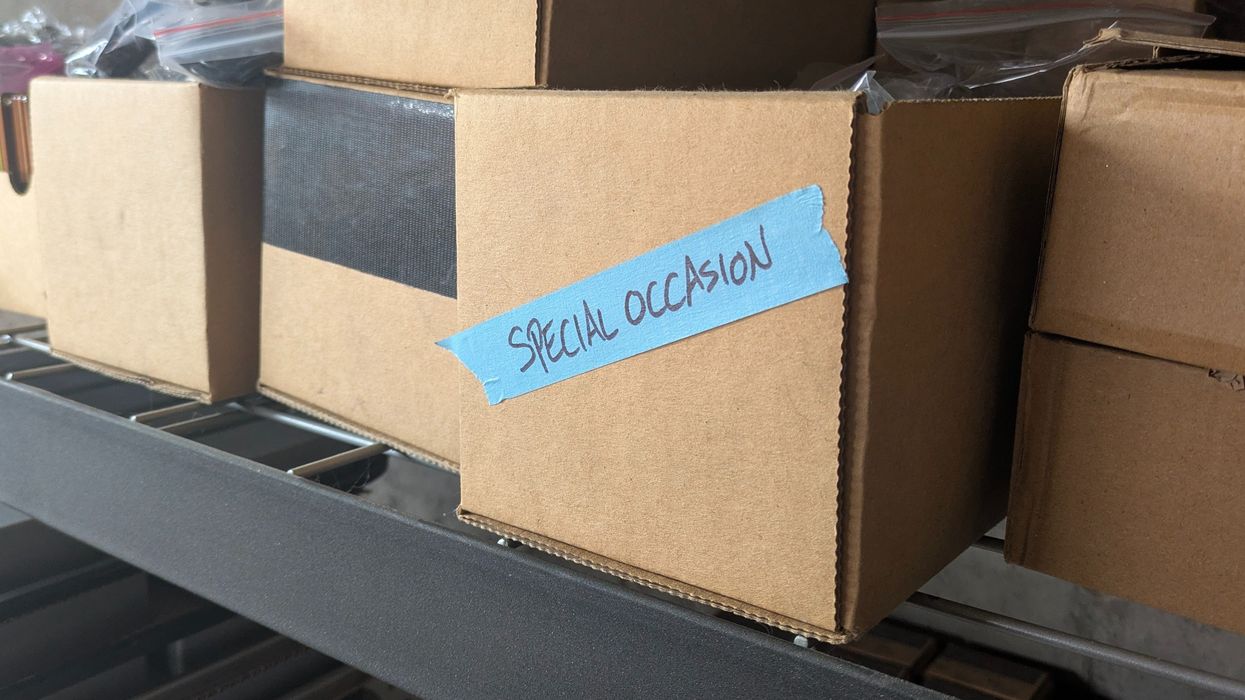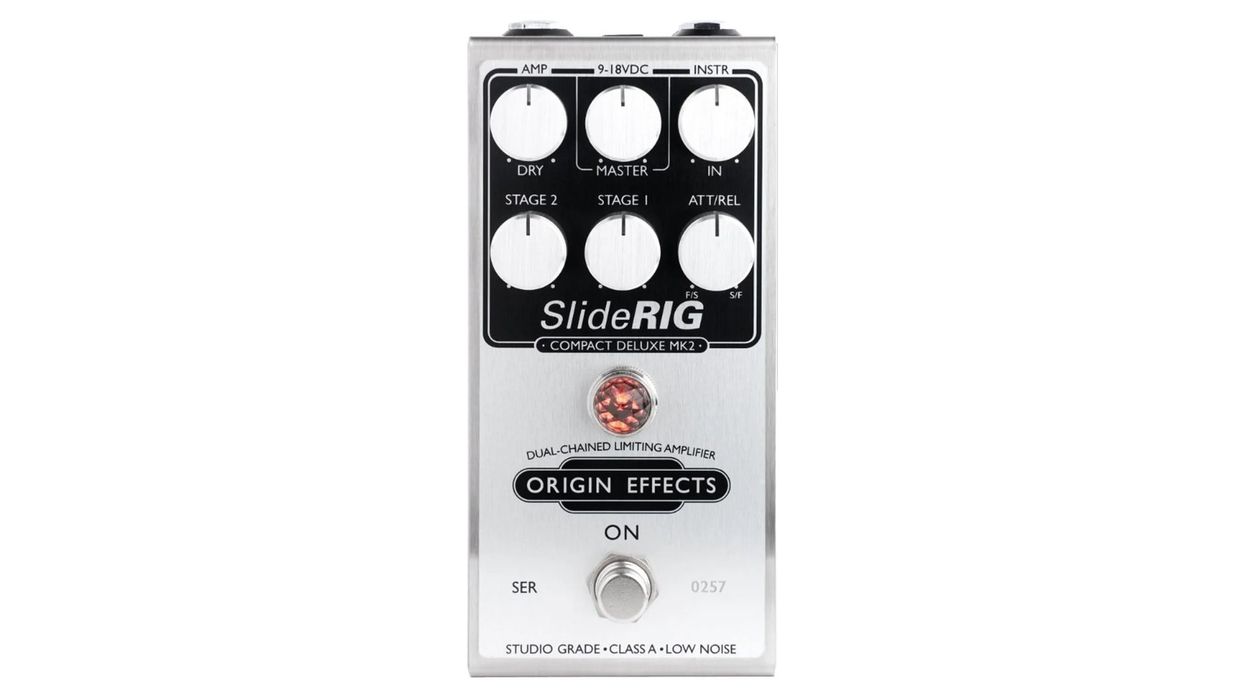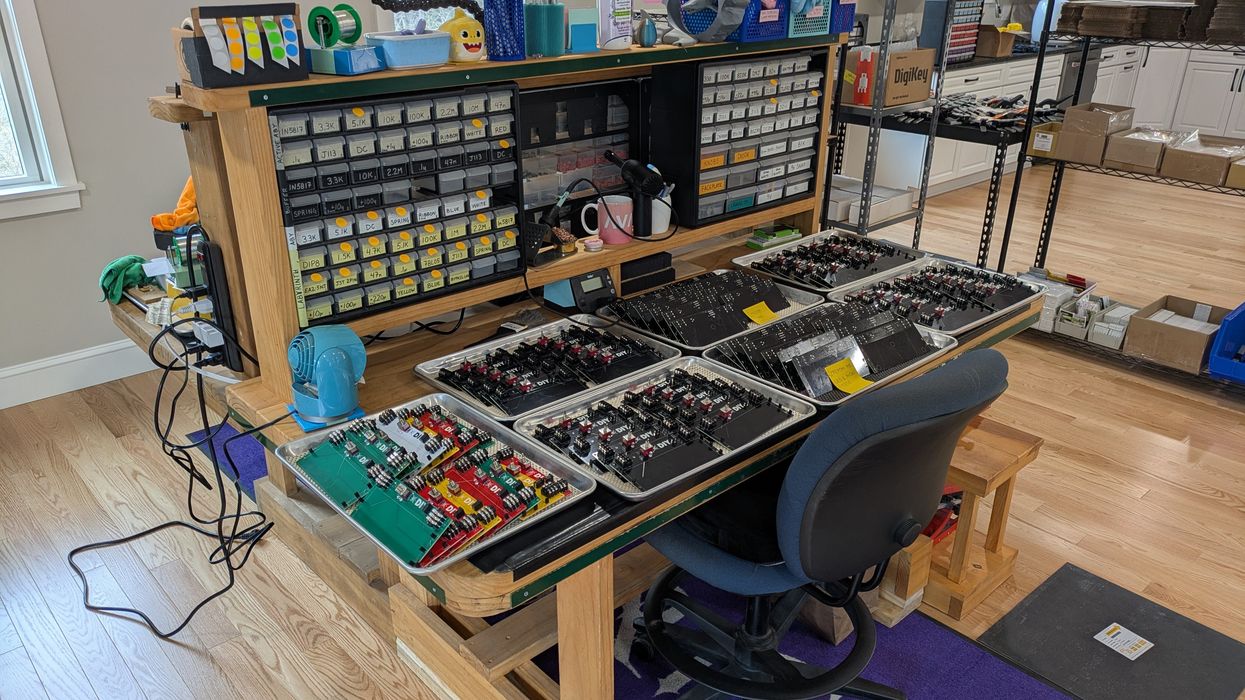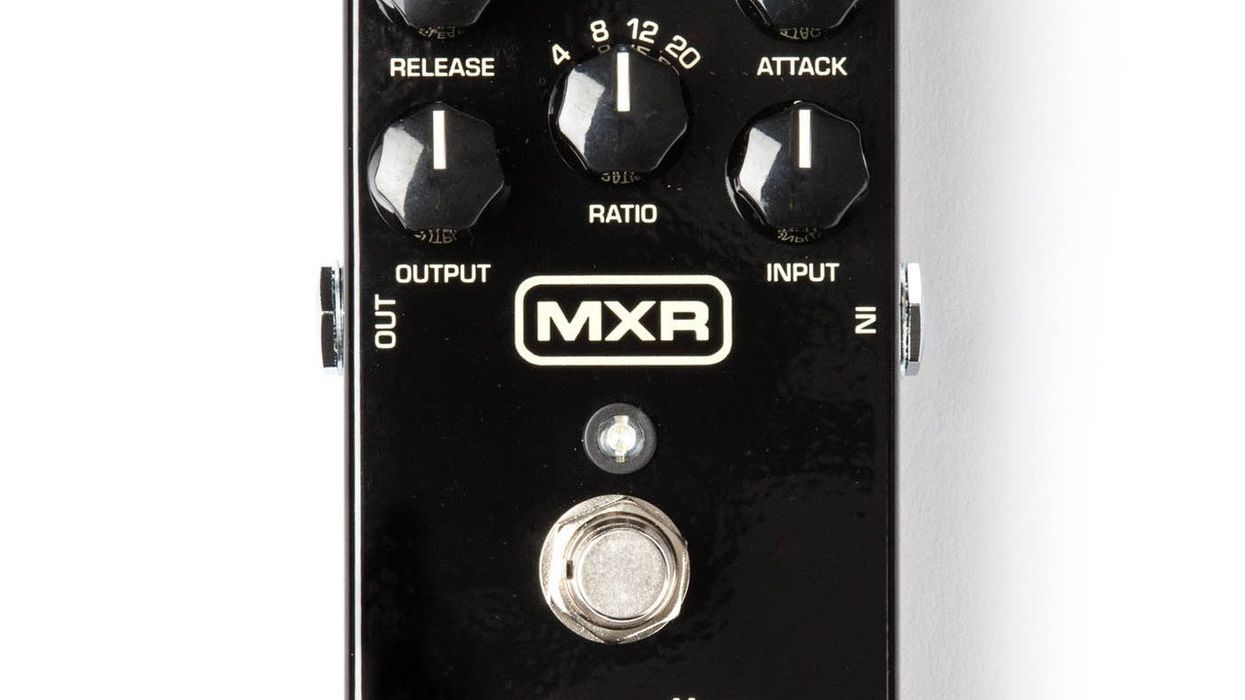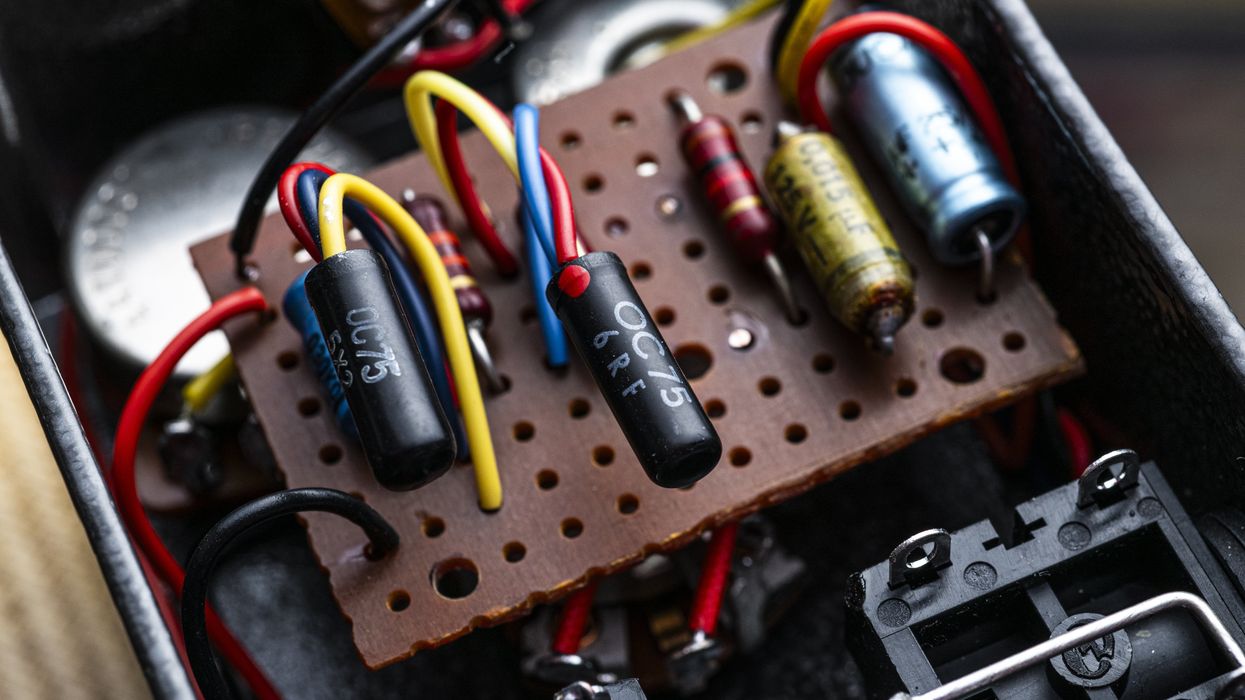With so many cool and interesting pedals readily available to the modern musician, you will inevitably come to the point where you need to build a pedalboard (especially if you’re a gear junkie like me). You’ll need to decide which kind of board to buy or build, which pedals will actually make it on your board, the optimum order of the effects, cable lengths, and whether or not you will buy pre-made cabling or wire your own. But probably the single most critical decision you’ll make is how to power all of the pedals on your new board. There are three major issues to consider when thinking about powering your pedalboard: voltage, current, and isolation.
Luckily for us, the early popularity of Boss pedals helped to establish an unofficial standard when it comes to the voltage level and DC (direct current) jack used in powering pedals. The simple fact that most pedals could be powered by a 9V battery was the logical starting point that led to the inclusion of 9V DC power inputs. These DC inputs were useful when players didn’t want to hassle with batteries, and instead wanted to be able to power their pedals from standard AC wall outlets. Boss chose to use a 2.1mm DC power input jack with a center negative polarity and because of this, the majority of pedals on the market today also use this “standard.” Take a look at the labeling next to the input on your pedals and chances are it will say 9V DC, center negative (an icon symbolizing a jack with a negative sign pointing to the center symbolizes this).
Of course, not all pedals are powered with 9V, so make sure to take note if there is one in your collection with special voltage requirements. Some devices out there even use 9V AC (alternating current) power. Be very careful not to accidentally plug an AC power source into a pedal designed to be powered with DC. Chances are that if a pedal needs 18V or 24V DC, the manufacturer will have supplied a special power adapter anyway. Be sure not to hook your pedal up to a higher voltage source than it calls for—no one likes ending their pedalboard project with a puff of smoke!
Current is the next thing you will need to think about. The current that a given effect consumes is not likely listed on the pedal itself. For that you will need to look in the manual. Assuming they’re analog devices, a distortion, overdrive, fuzz, compressor, or wah will in almost all cases have a very low current requirement (less than 20 mA or so). This is because these classic analog effects use only a handful of transistors and op-amps with low power requirements.
A digital effect, on the other hand, will contain a microprocessor or DSP, probably some memory, logic chips, A/D and D/A converters, as well as supporting analog components. In this case, you will literally be powering millions of miniaturized transistors inside of these digital chips, so the pedal will be a bit hungrier for power. Digital and DSP-based pedals typically consume more than 150 or 200 mA, and modern power supply manufacturers have taken this into consideration.
The thing to remember about current is that there is no danger in having more than you need available. But if your power supply can’t keep up with demand, your pedal may not even turn on. Worse yet, it could shut down in the middle of a gig. Think of current like horsepower in a car. If you have a 450-horsepower muscle car, you are not using all of that power when backing out of your garage, but it’s there waiting for you when you step on the gas.
Voltage and current are critical in getting all of your pedals to work properly, but there’s one more thing that is crucial in making a low-noise rig: isolated power. Whenever you string together a number of different effects, their electronics can interact in both good and very bad ways.
The most common noise problem I regularly encounter when helping players troubleshoot their pedalboard is ground loops. Ground loops are commonly caused when using a daisy-chain power cable to power multiple pedals. This creates a ground loop between every pedal in the daisy chain!
Why should we avoid ground loops? One reason is that they allow stray magnetic fields to introduce hum into your signal path. Another is that noise currents are able to flow into your audio instead of cleanly back into the power supply. If the only type of effect you use is distortion, you may not have heard the ill effects. But, if you have modulation and delay pedals, the likelihood of ground loops wreaking havoc on your signal is high.
To solve this, power supply manufacturers have created multiple-output isolated power supplies. The Voodoo Lab Iso-5 is an example of a cost-effective, multiple-output isolated power supply. An isolated supply works by using a transformer (or multiple transformers) to keep every power outlet completely electrically isolated. This prevents your guitar signal ground from connecting to multiple pedals at the power supply.
Ideally, you want your ground and guitar signal to have a single path to your amp. Otherwise, hum and other nastiness will creep its way into your tone. Multiple-output supplies, when designed correctly, also supply regulated power that is cleaner than a standard wall wart. That said, if you have a bunch of wall warts lying around anyway, having them all connected to a power strip under your board is not a bad solution at all. This will also provide isolation if each wall wart is only plugged into a single pedal.
This may be a lot to think about, but if you do a bit of research up front, you’ll save a lot of frustration down the line. Watch those voltage levels, make sure you have enough current available, and use an isolated power source for each effect. Happy shredding!
[Updated 12/6/21]
